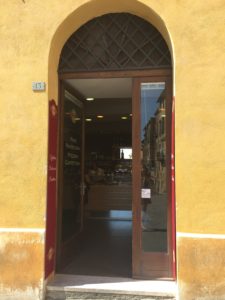The motto of my time so far in Italy has been: do it for the cultural experience. Before I arrived in Italy I promised myself I would never speak English when interacting with Italians, but that turned out to be more difficult than I realized. It wasn’t just a language barrier; everything was different, even if sometimes it was only slightly different. The first time I walked into a bar for coffee I immediately panicked. I had heard the horror stories of tourist asking for a latte and receiving a cup of milk, and I frankly couldn’t figure out how to go about ordering. Completely intimidated, I walked out of the bar and after a brief pep talk to myself walked half a block down the street and went into the next bar.
The only way to learn the language and learn the culture is through trying, even when it is awkward and uncomfortable. After my first couple experiences ordering myself un café and un cornetto I decided to try having a conversation, even a short one, every time I got coffee.

The image above is my favorite place to get coffee during my midday break from classes.
My favorite experience so far has been when I accidentally ordered a cappuccino at 1 pm. After I ordered, I remembered that you’re not supposed to order coffee with so much milk that late in the afternoon. So I decided to ask the barista if it was ok that I was having a cappuccino so late. Maybe she was just being nice, over the quick conversation I had standing at the bar, but I learned that it was totally fine for me to be drinking that cappuccino. Yes, most people tend to drink espresso in the afternoon, but every day around 4 pm, plenty of university students come into her shop to have their own afternoon cappuccino.
The best part about these little conversations is that even though they are about seemingly meaningless things, I can see myself improving each time I practice. I’ve perfected my “script” to explain that I’m learning Italian and I’m from the United States, but I’ll be studying abroad in Bologna in January. The real challenge is when the conversation evolves, and I stray from the comfort of the well-known phrases and the ease of the simple present and past tenses. The real trick is trying to remain active in these conversations. Instead of thinking about the next thing I’m going to say while the other person is speaking, I’ve been trying to really listen, understand, and ask a couple questions about a few critical words that I might not know. Instead of relying on asking questions so that the other person is almost always speaking, I’ve been trying to form my own opinions and actually participate in the discussion. Now I even start talking with someone I normally wouldn’t, such as the person eating her cornetto next to me at the bar, just for the “cultural experience.”